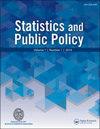Optimal Matching for Observational Studies That Integrate Quantitative and Qualitative Research
IF 1.5
Q2 SOCIAL SCIENCES, MATHEMATICAL METHODS
引用次数: 2
Abstract
Abstract A quantitative study of treatment effects may form many matched pairs of a treated subject and an untreated control who look similar in terms of covariates measured prior to treatment. When treatments are not randomly assigned, one inevitable concern is that individuals who look similar in measured covariates may be dissimilar in unmeasured covariates. Another concern is that quantitative measures may be misinterpreted by investigators in the absence of context that is not recorded in quantitative data. When text information is automatically coded to form quantitative measures, examination of the narrative context can reveal the limitations of initial coding efforts. An existing proposal entails a narrative description of a subset of matched pairs, hoping in a subset of pairs to observe quite a bit more of what was not quantitatively measured or automatically encoded. A subset of pairs cannot rule out subtle biases that materially affect analyses of many pairs, but perhaps a subset of pairs can inform discussion of such biases, perhaps leading to a reinterpretation of quantitative data, or perhaps raising new considerations and perspectives. The large literature on qualitative research contends that open-ended, narrative descriptions of a subset of people can be informative. Here, we discuss and apply a form of optimal matching that supports such an integrated, quantitative-plus-qualitative study. The optimal match provides many closely matched pairs plus a subset of exceptionally close pairs suitable for narrative interpretation. We illustrate the matching technique using data from a recent study of police responses to domestic violence in Philadelphia, where the police report includes both quantitative and narrative information.整合定量和定性研究的观察性研究的最佳匹配
摘要治疗效果的定量研究可能会形成许多配对的治疗受试者和未治疗对照者,他们在治疗前测量的协变量方面看起来相似。当治疗不是随机分配的时,一个不可避免的问题是,在测量的协变量中看起来相似的个体在未测量的协变中可能不同。另一个令人担忧的问题是,在没有定量数据记录的背景下,定量测量可能会被研究人员误解。当文本信息被自动编码以形成定量度量时,对叙事上下文的检查可以揭示最初编码工作的局限性。现有的提案需要对匹配配对的子集进行叙述性描述,希望在配对的子集中观察到更多没有定量测量或自动编码的内容。配对的子集不能排除对许多配对的分析产生重大影响的细微偏差,但也许配对的子集可以为此类偏差的讨论提供信息,也许会导致对定量数据的重新解释,或者可能会提出新的考虑和观点。关于定性研究的大量文献认为,对一部分人的开放式叙事描述可以提供信息。在这里,我们讨论并应用了一种支持这种综合、定量和定性研究的最优匹配形式。最佳匹配提供了许多紧密匹配的配对,加上适合叙事解释的异常紧密配对的子集。我们使用最近一项关于费城警方对家庭暴力反应的研究的数据来说明匹配技术,警方报告包括定量和叙述信息。
本文章由计算机程序翻译,如有差异,请以英文原文为准。
求助全文
约1分钟内获得全文
求助全文
来源期刊

Statistics and Public Policy
SOCIAL SCIENCES, MATHEMATICAL METHODS-
CiteScore
3.20
自引率
6.20%
发文量
13
审稿时长
32 weeks
 求助内容:
求助内容: 应助结果提醒方式:
应助结果提醒方式:


